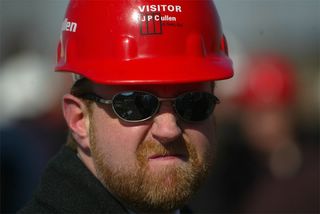99 problems but a cinematographer ain't one
There's dysfunctional families and then there's the Sugimoto household in the 1967 KOREYOSHI KURAHARA film "AI NO KAWAKI (THIRST FOR LOVE)."
RURIKO ASAOKA stars as a widow who has become the mistress of her father-in-law -- NOBUO NAKAMURA, who appeared in Yasujiro Ozu's "Tokyo Monogatari (Tokyo Story)."
Asaoka's character is obsessed with the family groundskeeper, who in turn got the maid pregnant. Nakamura's married son figures into the messy mix, too. He is openly attracted to Asaoka.
Kurahara gives us one big, unhappy family in this psychological thriller, and although Asaoka's character complains of inner torment, she has a habit of ruining everyone else's life.
No behavior is too heinous for Asaoka's character, and she manipulates with no visible sign of regret or conscience.
The movie's effect can be as dizzying as any film noir, and cinematographer YOSHIO MAMIYA can take some of the credit for that.
Mamiya also worked with Kurahara on the Japanese new wave classic "Kyonetsu No Kisetsu (The Warped Ones)" and his camera work here is just as dazzling.
Kurahara actually quit NIKKATSU after the studio upheld this film's release -- complaining it was too artsy.
In fact, Kurahara and Mamiya's artistic approach prevents the film from slipping into crazy soap opera territory.
Nikkatsu should have been grateful.
RURIKO ASAOKA stars as a widow who has become the mistress of her father-in-law -- NOBUO NAKAMURA, who appeared in Yasujiro Ozu's "Tokyo Monogatari (Tokyo Story)."
Asaoka's character is obsessed with the family groundskeeper, who in turn got the maid pregnant. Nakamura's married son figures into the messy mix, too. He is openly attracted to Asaoka.
Kurahara gives us one big, unhappy family in this psychological thriller, and although Asaoka's character complains of inner torment, she has a habit of ruining everyone else's life.
No behavior is too heinous for Asaoka's character, and she manipulates with no visible sign of regret or conscience.
The movie's effect can be as dizzying as any film noir, and cinematographer YOSHIO MAMIYA can take some of the credit for that.
Mamiya also worked with Kurahara on the Japanese new wave classic "Kyonetsu No Kisetsu (The Warped Ones)" and his camera work here is just as dazzling.
Kurahara actually quit NIKKATSU after the studio upheld this film's release -- complaining it was too artsy.
In fact, Kurahara and Mamiya's artistic approach prevents the film from slipping into crazy soap opera territory.
Nikkatsu should have been grateful.



0 Comments:
Post a Comment
<< Home